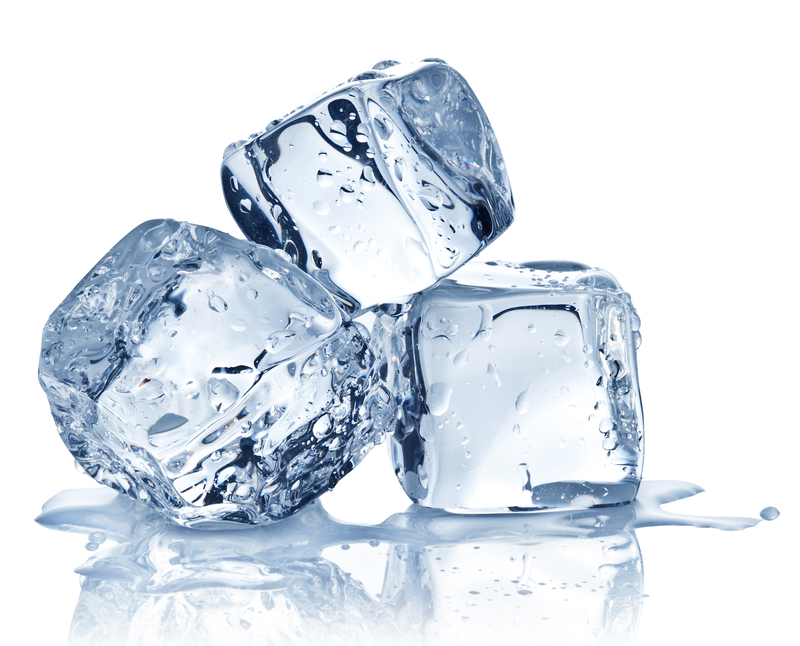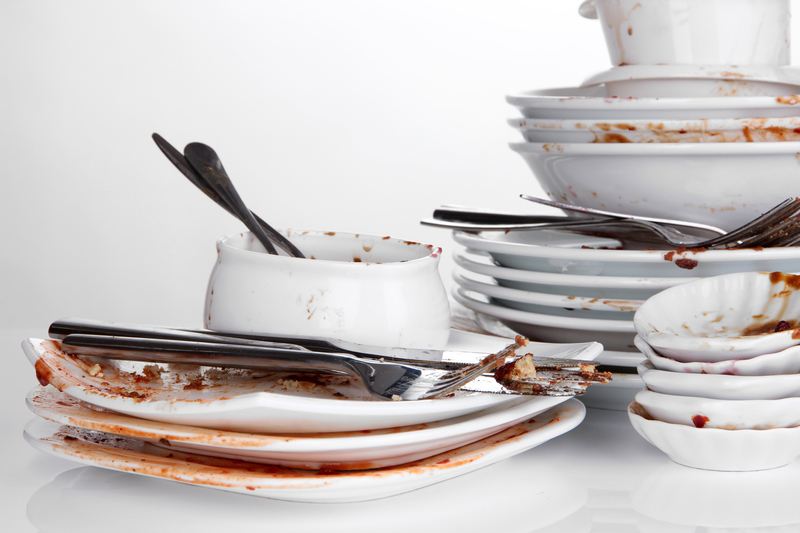Guide to Safely Washing Velvet Curtains for Enduring Beauty
Posted on 03/06/2025
Guide to Safely Washing Velvet Curtains for Enduring Beauty
Velvet curtains are synonymous with elegance, luxurious ambiance, and timeless style. However, their plush fabric and delicate pile require special attention when it comes to cleaning. In this comprehensive guide, we'll walk you through the essential steps and expert advice for safely washing velvet drapes, ensuring their beauty and longevity remain uncompromised.
Why Properly Washing Velvet Curtains Is Essential
Unlike other curtain materials, velvet is sensitive to harsh cleaning methods and improper handling. Poor washing techniques can lead to:
- Flattening or crushing the velvet pile
- Loss of color vibrancy
- Distortion of shape or shrinking
- Permanent water spotting and stains
Understanding the unique qualities of velvet and adopting suitable cleaning routines is key to preserving the enduring beauty of your curtains.

Understanding Your Velvet: Types of Velvet Commonly Used for Curtains
Before proceeding with any washing method, it's critical to identify the type of velvet your curtains are made from. Different velvets require different care. The most common types include:
- Cotton Velvet: Soft, luxurious; easily damaged by water.
- Silk Velvet: Very delicate; almost always requires professional care.
- Polyester or Synthetic Velvet: More resilient; can often withstand gentle hand washing.
- Crushed Velvet: Has a textured look; handle carefully to preserve the intentional 'crushed' effect.
Always check care labels before cleaning. If the label suggests "dry clean only," it's best to follow this guidance to avoid accidental damage.
Preparation: Before You Wash Velvet Curtains
1. Inspect the Curtains
- Look for any tears, stains, or weaknesses in the fabric.
- Repair minor damages before washing to prevent worsening during cleaning.
2. Remove Dust and Loose Dirt
- Use a vacuum cleaner with a soft brush attachment to gently clean velvet curtains.
- Brush in the direction of the nap to avoid crushing the pile.
- Alternatively, shake curtains gently outdoors to remove surface dust.
3. Test for Colorfastness
- Dab a small, hidden area with a damp white cloth.
- If color transfers, avoid water washing and opt for dry cleaning.
4. Remove Hardware
- Take off hooks, rings, and any attachments to avoid snagging or rust stains during washing.
How to Wash Velvet Curtains Safely
The Best Practices for Cleaning Velvet Drapes
There are several methods for cleaning velvet curtains, but not all are suitable for every kind of velvet. Here's how to determine which approach is right for your home:
Method 1: Professional Dry Cleaning
- Recommended for: Silk velvet, antique, or heavily soiled curtains.
- Dry cleaning is the safest option, maintaining the curtain's color and nap.
- Ask your cleaner if they have experience with velvet fabrics.
Tip: For irreplaceable or high-value curtains, always choose professional dry cleaning.
Method 2: Hand Washing Velvet Curtains
- Suitable for some synthetic or cotton velvets with washable care labels.
-
Steps to hand wash velvet curtains:
- Fill a large basin or bathtub with lukewarm water and a gentle detergent (ideally designed for delicates or baby clothes).
- Gently submerge the curtains - do not twist, wring, or rub vigorously.
- Swirl lightly for a few minutes to dislodge dirt; focus on stained areas by patting gently.
- Drain the water and refill with clean water to rinse. Repeat as needed until no detergent remains.
- Lift the curtains out carefully, supporting their weight to avoid stretching or misshaping.
Do not use hot water, as it can shrink and damage velvet. Avoid harsh chemicals and bleach at all costs!
Method 3: Machine Washing Velvet Curtains
- Only for robust, machine-washable synthetic velvets (check care label first).
-
Instructions:
- Use a delicate or gentle cycle with cold water.
- Wash curtains individually to prevent overcrowding, which can crush the pile.
- Use a mesh laundry bag for extra protection.
- Choose a mild detergent - skip fabric softener, as residue can dull the texture.
Never use a tumble dryer or high spin cycles, as these can irreversibly flatten or damage velvet fabric.
Effective Stain Removal Tips for Velvet Curtains
Stains are inevitable, but with quick and gentle action, you can prevent permanent marks. Here's how:
- Blot, never rub: Use a clean, dry cloth to absorb as much of the stain as possible.
- Test cleaning solutions: Always try any stain remover on a hidden area first.
- For water-based stains: Blot with a cloth dampened in lukewarm water, then air dry.
- For oil or grease stains: Sprinkle cornstarch or talcum powder, let it sit, then brush off gently and repeat if needed.
- For stubborn stains, consult a textile professional.
Drying Velvet Curtains: The Right Way
- Lay curtains flat on a clean, dry towel and reshape as required.
- Never use a tumble dryer. Excessive heat will damage velvet's pile and shape.
- Air dry away from direct sunlight to prevent fading and water rings.
- If you must hang to dry, support the fabric's weight evenly to minimize stretching and avoid clip marks.
Tip: If the nap appears crushed after drying, use a clothes steamer or steam from an iron (without touching the fabric) to gently refresh the pile. Always steam from the back of the curtain for best results.
How to Keep Velvet Curtains Beautiful Between Washes
- Regularly vacuum with a soft brush attachment to remove dust.
- Gently shake curtains to maintain pile fluffiness and remove loose debris.
- Spot clean stains immediately to prevent setting.
- Protect from direct sunlight with lining or sheers to prevent fading.
- Rotate the curtains if possible, to ensure even wear and fading.
Expert Tips for Long-Lasting Velvet Drapes
- Read and follow care labels: They offer manufacturer-specific advice, which is crucial.
- Handle with clean, dry hands: Oils and dirt can transfer easily to velvet.
- Travel with care: When moving or relocating, roll curtains rather than fold to minimize creases.
- Store correctly: Keep velvet curtains in breathable cotton covers, not plastic, to avoid moisture buildup.
- Consult professionals: For valuable or antique velvet, get advice from textile conservators.
Common Mistakes to Avoid When Washing Velvet Curtains
- Using hot water or high heat during washing or drying
- Overcrowding the washing machine, leading to crushed velvet pile
- Ignoring manufacturer instructions on the care label
- Rubbing or wringing the fabric
- Exposing to direct sunlight for prolonged periods while drying
FAQ: More Answers on How to Wash Velvet Curtains
Can I iron my velvet curtains?
It's not recommended to directly iron velvet curtains. If you need to eliminate wrinkles, gently steam them from the reverse side using a clothes steamer, or hang them in a steamy bathroom. Avoid direct contact between hot surfaces and the velvet pile.
How often should I clean velvet draperies?
Deep cleaning is generally needed every 12-24 months. However, regular dusting and spot cleaning will keep them looking fresh between major washes.
Is it safe to use commercial stain removers?
Always test on an inconspicuous area first. Many commercial products are too harsh for velvet. When in doubt, stick to mild soap and water or consult a professional cleaner.

Conclusion: Velvet Curtains That Wow For Years
Washing velvet curtains doesn't have to be intimidating. With careful handling, the right cleaning methods, and regular maintenance, you can preserve the rich texture and vibrant color of your velvet drapes for many years. Remember to check fabric care labels, act quickly on stains, and avoid shortcuts like tumble drying or harsh detergents. When in doubt, consult cleaning experts.
By following this complete guide to safely cleaning velvet curtains, you'll enjoy stunning, inviting windows--showcasing enduring luxury and comfort in your home.
Related Resources for Velvet Curtain Care
- How to Remove Wrinkles from Velvet Curtains
- Best Detergents for Velvet Fabrics
- When to Dry Clean vs. Hand Wash Velvet Drapery
If you found this velvet curtain washing guide helpful, share it with friends or bookmark it for your next deep cleaning session!






